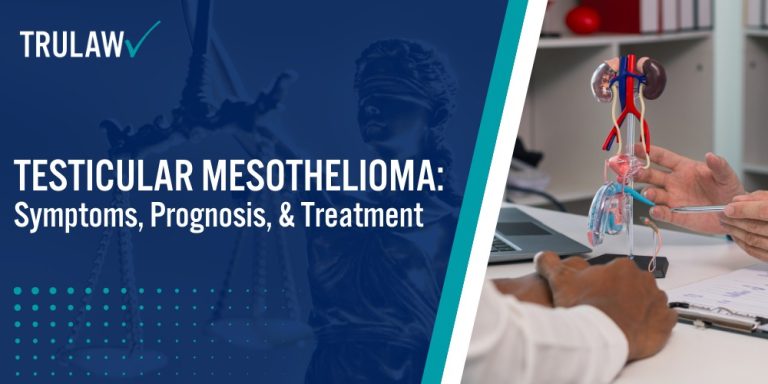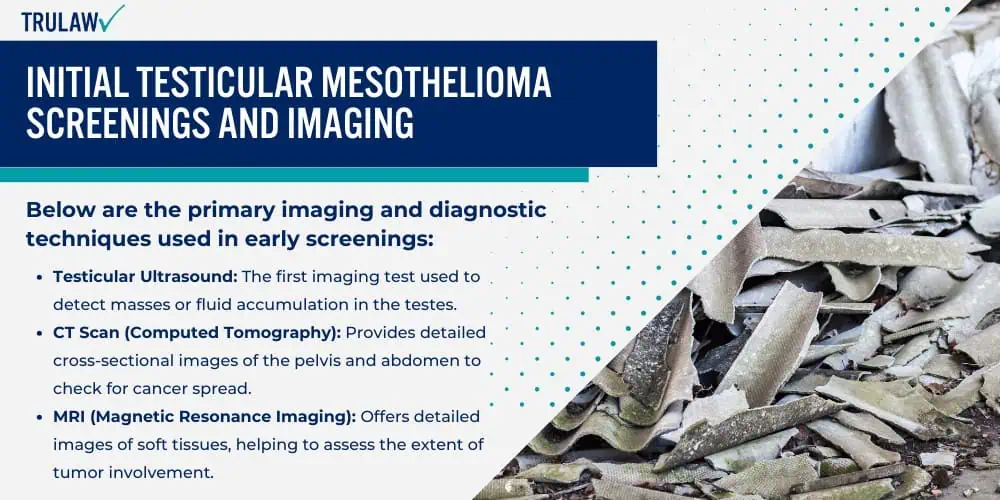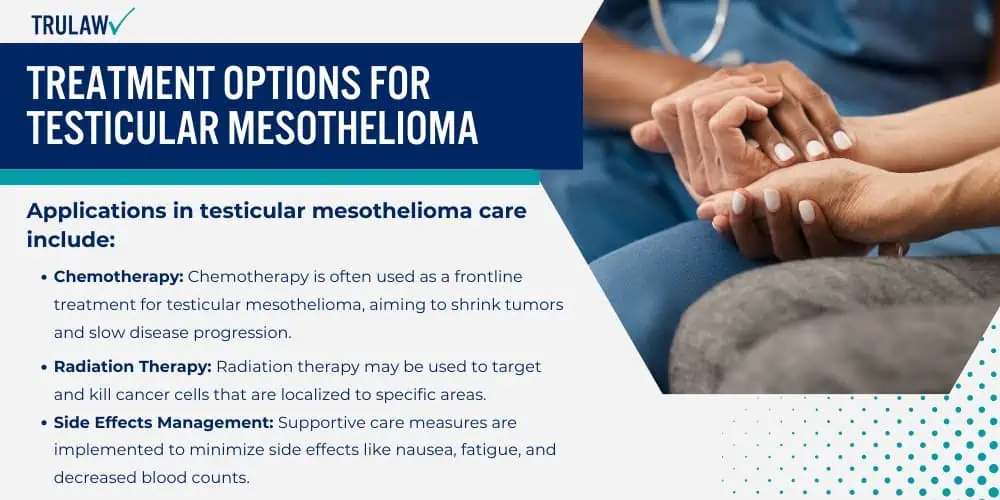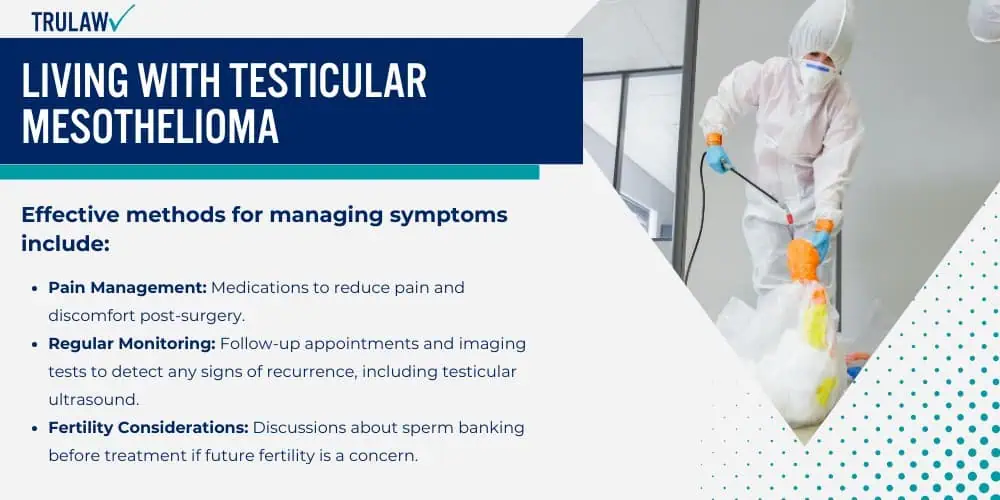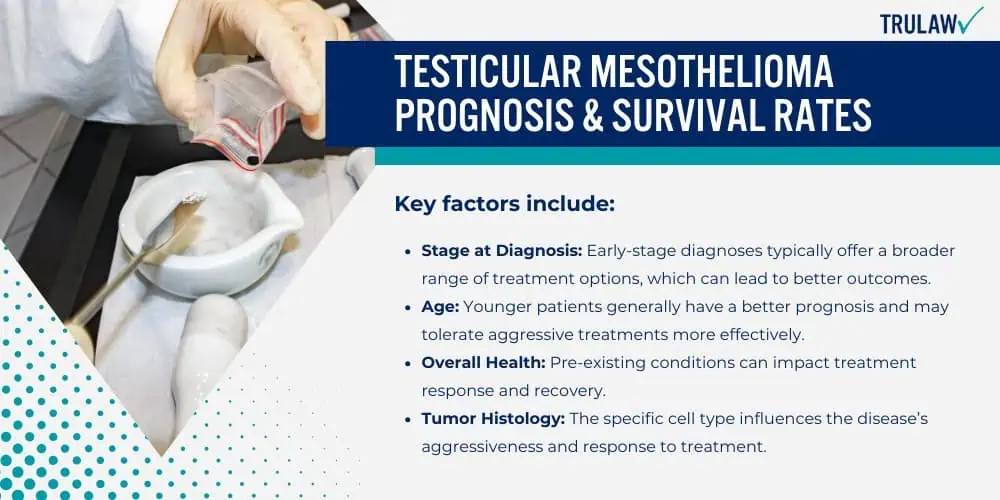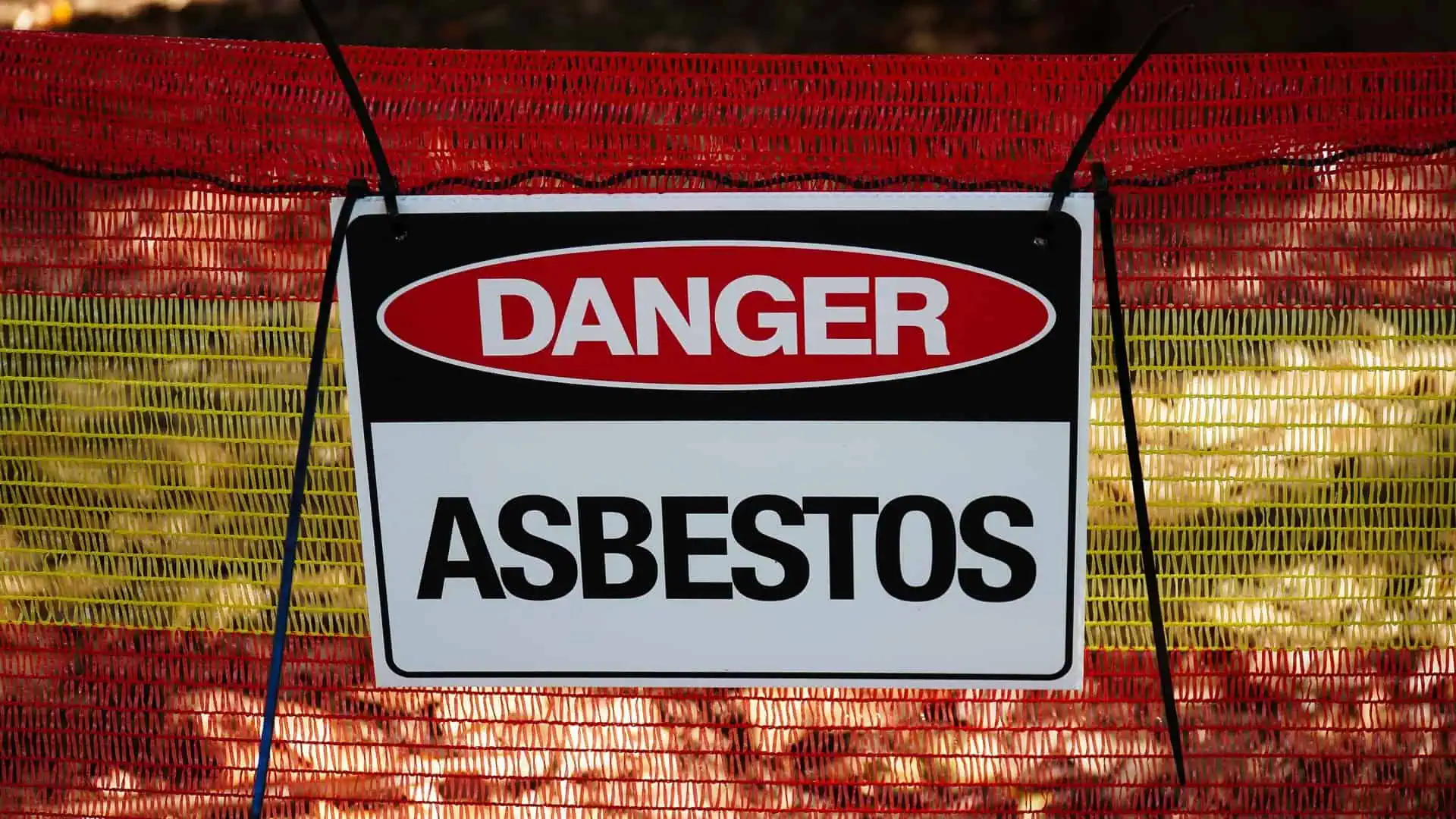Symptoms of testicular mesothelioma often develop gradually and may initially be misinterpreted as less severe conditions, such as hernias or testicular inflammation.
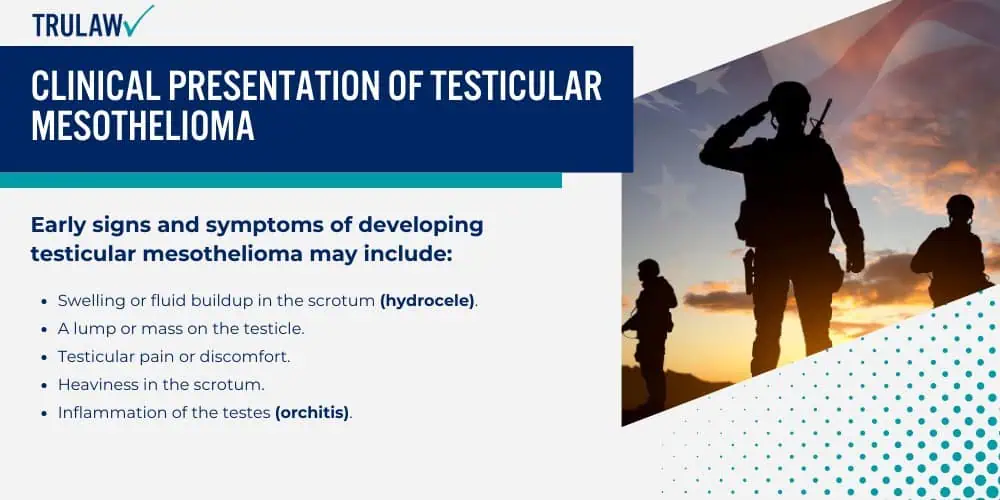
This rare cancer primarily affects the lining of the testes, leading to symptoms that can remain subtle for months or even years.
Early recognition of these symptoms is challenging, frequently resulting in delayed diagnosis.
Testicular Mesothelioma: Early Signs & Symptoms
The early testicular mesothelioma symptoms include testicular swelling, lumps, or pain, which can be subtle and easily overlooked.
These initial symptoms are often mistaken for minor ailments, delaying diagnosis until the disease progresses.
Initially, discomfort may feel sporadic, and swelling may seem negligible, particularly in individuals without a known asbestos exposure history.
Early signs and symptoms of developing testicular mesothelioma may include:
- Swelling or fluid buildup in the scrotum (hydrocele).
- A lump or mass on the testicle.
- Testicular pain or discomfort.
- Heaviness in the scrotum.
- Inflammation of the testes (orchitis).
Individuals experiencing any combination of these symptoms, especially those with a history of asbestos exposure, should consider seeking a medical evaluation.
Early detection is crucial to detect testicular tumours and improve patient outcomes.
Progression of Testicular Mesothelioma Symptoms
As testicular mesothelioma advances, symptoms can become more pronounced and significantly affect daily life.
Individuals may experience increased swelling, significant pain, and potential spreading of the cancer to other areas.
These intensified symptoms are often accompanied by fatigue and difficulty performing routine activities.
The progression of symptoms typically includes:
- Persistent, severe testicular pain that intensifies over time.
- Increased size of the testicular mass.
- Signs of metastasis, such as abdominal pain or swelling.
- Unexplained weight loss and fatigue.
- Changes in testicular shape or texture.
In advanced stages, the cancer may spread to nearby structures, such as the inguinal lymph nodes, affecting overall health and limiting treatment options.
Recognizing these signs promptly is essential, especially for those with an asbestos exposure history, as early intervention may improve prognosis and symptom management.
